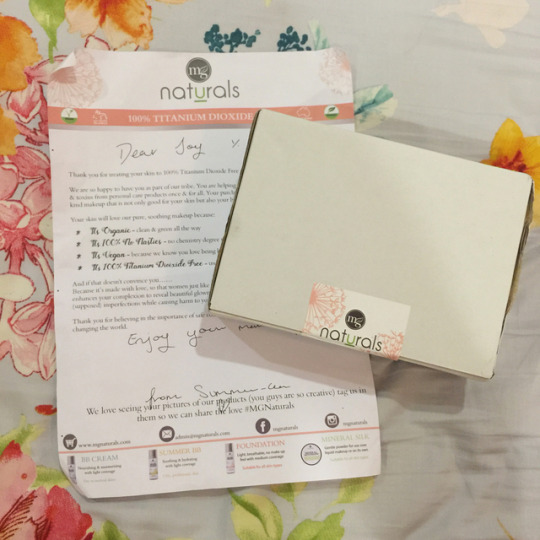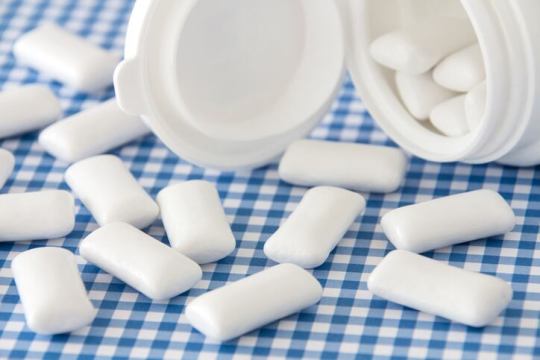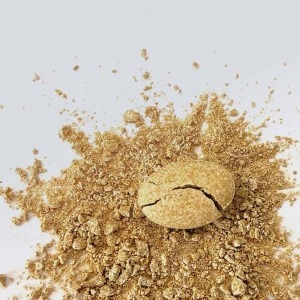#TitaniumDioxideFree
Explore tagged Tumblr posts
Text
Titanium Dioxide-Free Food Coating Market Attracts Investment as Natural Ingredients Gain Consumer Preference
The Titanium Dioxide-Free Food Coating Market is gaining significant traction as consumer preferences shift toward clean-label, natural, and health-conscious food products. Traditionally, titanium dioxide (TiO₂) has been widely used in food coatings to provide a bright white appearance and improve visual appeal. However, growing concerns about its potential health risks and increasing regulatory scrutiny have pushed food manufacturers to explore alternative coating solutions that are safe, effective, and visually appealing.

Titanium dioxide was once considered an inert and harmless additive. However, recent scientific studies and assessments from regulatory bodies, including the European Food Safety Authority (EFSA), have questioned its safety. In 2021, EFSA declared titanium dioxide as “no longer considered safe as a food additive” due to concerns over its potential genotoxicity. Following this decision, the European Commission implemented a ban on the use of TiO₂ in food starting in 2022. This regulation has had a ripple effect across the global food industry, prompting companies to reformulate products and adopt titanium dioxide-free alternatives.
This regulatory push, combined with consumer demand for transparency and clean labeling, has catalyzed the emergence of the titanium dioxide-free food coating market. These alternative coatings often include natural colorants, starches, hydrocolloids, cellulose derivatives, and plant-based materials that offer similar performance without the associated health risks. Additionally, these alternatives align with the growing trends of vegan, non-GMO, and organic food products.
The market for titanium dioxide-free food coatings is diverse, encompassing various applications such as confectionery, bakery, dairy, nutraceuticals, and processed foods. Confectionery products, particularly chewing gums, candies, and chocolates, represent a significant portion of the market due to the aesthetic importance of color and shine. In the bakery sector, these coatings are used to improve appearance, texture, and shelf life. As demand increases for functional and fortified foods, the nutraceutical industry is also adopting these coatings for tablets and capsules to ensure safe consumption.
Key players in the food ingredients and coatings industry are actively investing in research and development to create effective titanium dioxide alternatives. Companies like Ingredion, Sensient Technologies, Döhler, and Colorcon are leading efforts in developing natural coating solutions that meet performance, safety, and regulatory standards. These companies are focusing on innovation to deliver coatings that provide the same brightness, opacity, and protection as TiO₂ without compromising food quality or safety.
Geographically, Europe holds a dominant share in the titanium dioxide-free food coating market, primarily due to the regulatory ban and heightened consumer awareness. North America is following closely, with increasing demand from health-conscious consumers and proactive industry responses. The Asia-Pacific region is expected to witness rapid growth in the coming years as regulatory frameworks evolve and food manufacturers respond to global market dynamics.
Despite the positive outlook, the market faces challenges such as higher production costs, formulation complexity, and achieving desired sensory attributes. Replacing TiO₂ is not just about removing an ingredient but finding substitutes that maintain product stability, texture, appearance, and shelf life. However, advances in food technology, encapsulation methods, and natural pigment stabilization are helping overcome these hurdles.
Sustainability is another driving force shaping the titanium dioxide-free food coating market. Consumers and companies alike are prioritizing eco-friendly and ethically sourced ingredients. Natural and biodegradable alternatives support sustainable development goals, aligning with broader environmental and corporate social responsibility initiatives.
Looking ahead, the titanium dioxide-free food coating market is poised for robust growth. As transparency becomes central to food branding, and health and sustainability gain precedence, demand for safe and natural food coatings will continue to rise. Food companies that proactively transition to TiO₂-free alternatives are likely to benefit from increased consumer trust, regulatory compliance, and market competitiveness.
In conclusion, the titanium dioxide-free food coating market reflects a broader transformation in the global food industry. What started as a regulatory response is now evolving into a long-term shift toward safer, cleaner, and more sustainable food solutions. Innovation, consumer education, and responsible sourcing will remain key to unlocking the full potential of this growing market.
0 notes
Photo

A big thank you to @mgnaturals for this box of beautiful goodness 🌻 Pic 3: Bare face Pic 4 & 5: Liquid Foundation in Peach Bisque & Mineral Silk Foundation in Luminous Light I’m not a makeup person because I do not like the feeling of foundation/bb cream on my skin. I feel like there’s a layer of something 😂 But for MG Naturals Organic Airbrush Mineral Liquid Foundation SPF25, I love it. It’s light and creamy, very blendable and I adore that pearlescent glow it emits. No glitters whatsoever. I top it off with the Mineral Silk Foundation SPF40+. I just use my fingers to apply the liquid and the brush (super soft bristles, vegan & travel friendly, applies beautifully, no fallouts) for the powder. As you can see, the shade suits my skin tone and it’s like my skin. It’s a little bit (very minute) tacky at first but I think that’s because I applied my facial oils (2 actually) before that but after a while it absorbs and settles beautifully with or w/o powder. I don’t use it for coverage; I use this as my daily sunscreen as this doesn’t contain coconut oil 😃 The Mineral Veil and Illuminator are gorgeous: soft, not powdery, finely milled, not grainy, smells great. No breakouts! This is good news for me. Pics are not filtered or edited. I did not wear any blush. I am rather fair with a naturally rosy complexion. Thanks Kailah for the shades advise. Your makeup is the only one I’m using at the moment. Great packaging, very high quality products with healthy ingredients that are food for the skin ❤️ Highly recommended 👍🏻 Go check them out now, and no, I’m not paid in any way for this review. #mgnaturals #vegan #crueltyfree #titaniumdioxidefree #organicbeauty #veganskincare #toxicfreebeauty #naturalmakeup #supportsmallbusiness #supportwomeninbusiness #highlyrecommended #organicskincare #greenbeauty #naturalingredients #australianmade #skincarejunkie #greenskincare
#crueltyfree#vegan#greenbeauty#naturalmakeup#naturalingredients#australianmade#supportsmallbusiness#organicbeauty#titaniumdioxidefree#organicskincare#greenskincare#mgnaturals#toxicfreebeauty#veganskincare#skincarejunkie#supportwomeninbusiness#highlyrecommended
1 note
·
View note
Photo

Certified natural sunscreen🌍☀️🏖 #nongmo #natural #ewgsunsafety #oxybenzonefree #titaniumdioxidefree #nonnano #reefsafe #uvauvb #usamixedfilledpackaged #crueltyfree #onepercentfortheplanet #narragansettbeach #sorhodeisland #oceanstate #southcountyri #southcountylife #naturalsunscreen (Narragansett Beach, Rhode Island) https://www.instagram.com/p/BnWenFrgUhR/?utm_source=ig_tumblr_share&igshid=u8r5wq97y6go
#nongmo#natural#ewgsunsafety#oxybenzonefree#titaniumdioxidefree#nonnano#reefsafe#uvauvb#usamixedfilledpackaged#crueltyfree#onepercentfortheplanet#narragansettbeach#sorhodeisland#oceanstate#southcountyri#southcountylife#naturalsunscreen
0 notes
Photo

My favorite resource for @eltamdskincare #UVClear #SPF is @lovelyskin! Quick and free shipping 🙌🏼 #beautyblogger #titaniumdioxidefree #sensitiveskin #acnefree
0 notes
Text
Titanium Dioxide-Free Food Coating Market Trends Shaping Future Food Industry Regulations and Innovations
The food industry is undergoing a transformative shift, driven by increasing consumer awareness about health, safety, and sustainability. One significant trend gaining momentum is the rising demand for titanium dioxide-free food coatings. Titanium dioxide (TiO2), a widely used white pigment and whitening agent in food coatings, has faced growing scrutiny due to potential health concerns. This has accelerated the market transition toward safer and more natural alternatives, giving rise to the titanium dioxide-free food coating market.

Titanium dioxide has been a popular ingredient in food coatings, especially for confectionery, bakery products, chewing gum, and dairy items. Its primary function is to enhance the appearance by providing opacity and whiteness, as well as to protect food items from moisture and degradation. However, recent studies and regulatory evaluations have raised questions about the safety of titanium dioxide, especially concerning its potential carcinogenic effects when inhaled or ingested over prolonged periods. As a result, several regulatory bodies worldwide have either banned or restricted its use in food products.
This regulatory landscape, combined with consumer demand for cleaner labels and natural ingredients, is propelling the titanium dioxide-free food coating market forward. Manufacturers are actively seeking alternatives that maintain the desirable properties of titanium dioxide coatings while addressing safety concerns. These alternatives include natural mineral-based pigments, plant-derived extracts, and innovative polymer-based coatings that do not rely on synthetic whiteners.
The growth of this market is influenced by multiple factors:
1. Regulatory Pressure: In 2021, the European Food Safety Authority (EFSA) declared titanium dioxide as no longer safe for use as a food additive, which prompted the European Union to restrict its use. This decision has been a significant driver for manufacturers to reformulate their products and adopt titanium dioxide-free coatings to comply with new regulations. Similar regulatory movements are emerging in other regions, including Asia and North America, creating a ripple effect on the global market.
2. Consumer Awareness and Demand: Modern consumers are increasingly scrutinizing product labels and demanding transparency in ingredient sourcing. The clean-label movement, emphasizing minimal, recognizable, and natural ingredients, has directly impacted the demand for titanium dioxide-free coatings. Consumers are favoring products with natural additives, free from controversial substances, thus encouraging food manufacturers to innovate and adapt.
3. Technological Advancements: Advancements in food technology have enabled the development of efficient titanium dioxide-free coatings that do not compromise on visual appeal, texture, or shelf life. Innovations in bio-based polymers and natural pigments such as calcium carbonate, zinc oxide, and plant-derived cellulose are proving effective alternatives. These materials not only meet safety standards but also provide functional benefits like moisture resistance and enhanced protection.
4. Expansion in End-Use Industries: The demand for titanium dioxide-free coatings is growing across various food sectors. Confectionery products, chewing gum, bakery, dairy, and snack foods are prominent categories where coating plays a vital role in product quality and consumer appeal. The shift to safer coatings in these segments is creating vast opportunities for manufacturers and suppliers.
5. Sustainability Concerns: Sustainability is a core consideration for many companies today. Titanium dioxide production and disposal raise environmental concerns due to its mining and chemical processing. Transitioning to eco-friendly and biodegradable coating materials aligns with corporate sustainability goals, further boosting market growth.
Market Challenges
Despite promising growth prospects, the titanium dioxide-free food coating market faces several challenges. The foremost is the cost factor—alternative coatings can be more expensive due to raw material sourcing and complex manufacturing processes. Additionally, replicating the exact whitening effect and functional properties of titanium dioxide remains a technical challenge. Some alternatives may also affect taste, texture, or shelf life, which requires extensive research and product testing.
Moreover, regulatory approval processes for new coating materials can be lengthy and complex, delaying market entry. Manufacturers must also educate consumers and retailers about the safety and benefits of titanium dioxide-free coatings to overcome skepticism and resistance to change.
Future Outlook
The titanium dioxide-free food coating market is poised for steady growth over the next decade, driven by evolving regulations, consumer trends, and technological innovation. Strategic collaborations between ingredient suppliers, food manufacturers, and research institutions will play a critical role in developing next-generation coatings that are safe, effective, and sustainable.
Emerging markets in Asia-Pacific and Latin America present significant growth opportunities, fueled by rising urbanization, disposable incomes, and health-conscious consumers. Additionally, the growing vegan and organic food sectors are likely to adopt titanium dioxide-free coatings as part of their commitment to natural and clean-label products.
In conclusion, the titanium dioxide-free food coating market represents a crucial shift towards safer and more sustainable food production. As the global food industry embraces transparency, health, and environmental responsibility, titanium dioxide-free coatings are set to become the new standard, ensuring product safety and consumer confidence in the years to come.
#TitaniumDioxideFree#FoodCoating#CleanLabel#FoodSafety#NaturalIngredients#FoodIndustryTrends#SustainableFood
0 notes
Text
Titanium Dioxide-Free Food Coating Market Growth Driven by Consumer Demand for Natural Ingredients
The global food industry has seen a significant shift in consumer preferences in recent years, with a growing emphasis on natural, healthier, and environmentally friendly ingredients. One of the most notable changes in this landscape has been the rising demand for titanium dioxide-free food coatings. Titanium dioxide (TiO2), traditionally used in food products for its bright white color and UV-protective properties, has raised health and environmental concerns. As a result, the titanium dioxide-free food coating market has gained momentum, driven by a combination of consumer awareness, regulatory changes, and technological advancements.

The Role of Titanium Dioxide in Food Coatings
Titanium dioxide has long been used in food coatings for its ability to improve the appearance and texture of products. Its bright white color makes it a popular choice in products like candies, chewing gum, powdered sugar, and icing. Additionally, TiO2 serves as a UV filter, helping to protect food from light degradation and extending shelf life. It also provides a smooth and shiny finish, enhancing the visual appeal of food products.
However, in recent years, concerns about the safety of titanium dioxide in food have come to the forefront. Research has suggested that ingesting TiO2 in large quantities could potentially lead to adverse health effects, including digestive issues and inflammation. In 2021, the European Food Safety Authority (EFSA) re-evaluated the safety of TiO2 and concluded that it could no longer be considered safe as a food additive. This decision spurred regulatory bodies in various regions to reconsider the use of titanium dioxide in food products.
Shifting Consumer Preferences and Regulatory Changes
Consumers are increasingly aware of the ingredients used in their food, and they are seeking products that align with their values, including natural and clean-label options. As health concerns surrounding titanium dioxide have grown, many consumers are opting for foods that are free from this controversial additive. This shift in demand is a key driver of the titanium dioxide-free food coating market.
In response to this trend, food manufacturers are investing in alternatives to titanium dioxide that are both safe and effective. These alternatives are typically derived from natural sources, such as plant-based ingredients, minerals, or other food-grade additives that provide similar benefits without the health risks associated with TiO2.
Regulatory changes have also played a significant role in shaping the market for titanium dioxide-free food coatings. Following the EFSA’s decision, several countries, including those in the European Union, have moved to ban or restrict the use of titanium dioxide in food products. This has prompted food producers to seek safer alternatives that comply with new regulations and meet the evolving demands of health-conscious consumers.
Key Alternatives to Titanium Dioxide
Several natural alternatives to titanium dioxide are gaining popularity in food coatings, offering similar functional properties without the associated risks. These alternatives include:
Rice Powder and Cornstarch: Both rice powder and cornstarch are commonly used as natural alternatives to TiO2 in food coatings. They provide a similar white appearance and are effective in enhancing the texture and consistency of food products. Additionally, these ingredients are widely regarded as safe and non-toxic.
Calcium Carbonate: Calcium carbonate is another popular choice for food coatings. It is a naturally occurring mineral that can provide the desired opacity and white color in food products. It also offers a source of calcium, which can be an added nutritional benefit.
Plant-Based Powders: Plant-derived powders, such as potato starch or beet powder, can be used to create natural coatings with a white or off-white appearance. These powders are biodegradable, non-toxic, and align with the clean-label movement.
Silicon Dioxide: Silicon dioxide, also known as silica, is a mineral-based alternative that is commonly used as an anti-caking agent in food coatings. It helps improve the texture of food products and can serve as a substitute for titanium dioxide in certain applications.
Market Trends and Growth Prospects
The titanium dioxide-free food coating market is expected to experience significant growth in the coming years. Several factors contribute to this growth, including rising consumer demand for natural and clean-label products, increasing regulatory restrictions on titanium dioxide, and the continuous development of alternative food coatings.
North America and Europe are currently the largest markets for titanium dioxide-free food coatings, driven by stringent regulatory measures and the growing preference for healthier, safer food options. However, the Asia-Pacific region is also expected to witness strong growth, as changing consumer lifestyles and rising awareness about food safety drive the demand for non-toxic food coatings.
Additionally, the development of new and innovative alternatives to titanium dioxide is opening up new opportunities in the market. Research and development efforts are focused on creating cost-effective, sustainable, and safe food coating solutions that can meet the needs of both consumers and manufacturers.
Conclusion
The titanium dioxide-free food coating market is a rapidly evolving sector that reflects the broader trends in the food industry toward health-conscious, sustainable, and natural products. As consumers demand cleaner and safer food options, manufacturers are turning to alternative ingredients that offer similar benefits without the potential health risks of titanium dioxide. With regulatory support and continued innovation, the titanium dioxide-free food coating market is poised for significant growth, providing exciting opportunities for both industry stakeholders and consumers alike.
0 notes